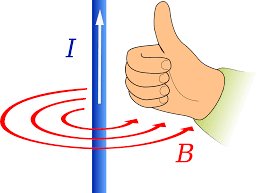Speakers: Difference between revisions
| Line 48: | Line 48: | ||
==Connectedness== | ==Connectedness== | ||
Electrical Engineers would use this principle in any sort of audio input or output device, along with anyone developing a product with any kind of audio. | Electrical Engineers would use this principle in any sort of audio input or output device, along with anyone developing a product with any kind of audio. | ||
Speakers have significantly improved society in applications such as cellphones, radios, televisions, etc. | Speakers have significantly improved society in applications such as cellphones, radios, televisions, etc. Without speakers, our current day-to-day communication would be impossible. | ||
==History== | ==History== | ||
Latest revision as of 00:17, 6 December 2015
claimed by rhester8
The Main Idea
Speakers are devices that are used to translate electrical signals into amplified sounds. Essentially, they have the opposite function of microphones which convert sounds into electrical signals.
How Speakers Work
Speakers are comprised of 3 fundamental parts: a coil, a permanent magnet, and a cone. The coil is positioned near the permanent magnet. It is made of wire and wrapped around metal, so when a current is passed through the device, it creates a magnetic field. In this way, the coil is able to act as an electromagnet. Electrical signals are pulsed into the speaker from an external device (microphone, computer, iPod, etc.) acting as currents and creating a magnetic field from the coil. This magnetic field interacts with the nearby permanent magnet (either repels it or attracts it based on its direction). Because the impulses act as an alternating current, the direction of the current is always changing; therefore, the direction of the magnetic field is changing. Due to the change in direction of the magnetic field, the interactions with the permanent magnet also switch back and forth. For instance, if the magnetic field created by the current initially attracted the permanent magnet, milliseconds later, the current would change directions and the permanent magnet would be repelled by the new, altered magnetic field. This very frequent switch from attraction to repulsion (& visa versa) of the permanent magnet and the coil creates vibrations. The cone of the speaker, usually made of thin paper or plastic, then amplifies these vibrations, therefore increasing their amplitude and volume.
1.Cone
2.Coil
3.Permanent Magnet
A Mathematical Model
The formula for a magnetic field is as follows: [math]\displaystyle{ {\vec{F} = q\vec{v}\times\vec{B}} }[/math]
Where q is charge, v is velocity, and B is the magnetic field.
The coil wrapped metal is a solenoid. The formula for the Magnetic Field of a Solenoid is: [math]\displaystyle{ B = {\mu _{0}} \frac{NI}{L} }[/math] Where n is the number of loops in the coil. As shown in the equation, the greater the number of loops, n, the greater the magnetic field created by the solenoid.
The greater the magnetic field created by the solenoid, the greater the magnetic force. Therefore, having many coils increases the magnetic force, thus amplifying the electric signals sent into the speaker.
A Computational Model
Right-Hand Rule: To determine the direction of the magnetic field created by a coil, place your thumb in the direction of the conventional current and your fingers will curl in the direction of the magnetic field.
As you can see, if the current was to change directions (for example, if you were to flip the image upside down) the magnetic field would point the opposite direction. For this reason, the force by the coil on the permanent magnet would change directions.
Connectedness
Electrical Engineers would use this principle in any sort of audio input or output device, along with anyone developing a product with any kind of audio. Speakers have significantly improved society in applications such as cellphones, radios, televisions, etc. Without speakers, our current day-to-day communication would be impossible.
History
In 1921, the Phonetron became the first loudspeaker (powered by a coil) sold in the U.S.. This invention was based on a patent filed by C.L. Farrand. Before this invention, the only speakers were cone-like "horns" that were unable to effectively amplify the sound, so the Phonetron was a noticeable development in the audio industry. The Phonetron sold successfully upon its introduction to U.S. markets.
See also
Nature,Behavior,and Properties of Sound
Further reading
http://www.physicsbook.gatech.edu/Solenoid_Applications

